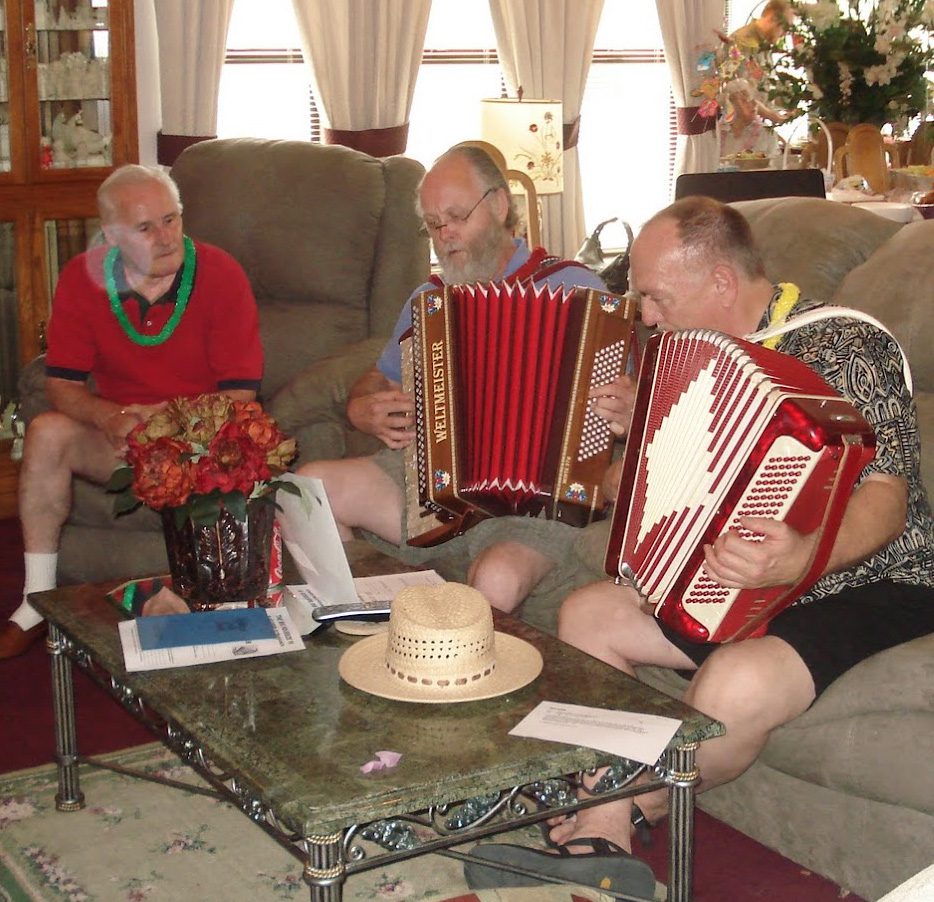The accordion’s rhythmic melodies, including that sometimes oompah-pah jam, still resonate with music lovers of all genres. Its captivating sounds conjure up images of the Czech polka, the Polish mazurka, the Russian khorovod, the Norwegian Rheinlander, Mexican norteño and Latino-based mariachi.

Known globally, squeeze boxes come in numerous sizes and types, and some are electronic. As a bellows-driven family of box-shaped musical instruments, accordions produce sound through airflow and vibrating reeds.
A Pennsylvania native, Dick Albreski began accordion lessons at age six. During high school, he played in a band for parties, weddings and dances within his Polish community. Of late, he has been the accordion player for the Bohemian Knights, a band that plays for Saturday night polka dances at Yukon’s Czech Hall.
“It’s not a hard instrument to learn,” says Albreski. “But it requires both hands to function at the same time. Your left hand will not function as your right. It will be completely different most of the time.”

Albreski founded the Oklahoma Accordion Club in Oklahoma City, which has monthly meetings where members help each other, play some music and pursue performance opportunities. As well, Albreski offers accordion lessons, and because of Zoom, he even has a student in England.
The club’s president, Maggie Abel, began learning the instrument in 2011.
“The accordion is a one-man band,” she says. “It’s unique and portable, and people find it fascinating. There’s no competition when you play a rare instrument.”
A member of the actively performing Tulsa Accordion Band, Irene Bookbinder wanted to take piano lessons, but her family didn’t have space for a piano. So, in fifth grade, she opted instead for accordion lessons.
“You have to read music to learn the accordion,” she says. “It is melodic, and you can make so many different sounds with it. It’s a versatile instrument and they’re beautiful to look at.”
Hoping the accordion’s popularity will continue to rise in the music world, Albreski says: “You need youth. The most important thing for the accordion would be youth.”

Accordion Origins
As a wind instrument invented during early 19th century Europe, the accordion quickly gained popularity throughout the continent. By the 1840s, Russians were manufacturing around 10,000 accordions annually.
But in 1863, a farmer in Castelfidardo, Italy, founded the Italian accordion industry, making the area the international accordion epicenter. The area reeled in skilled and inventive craftsmen who created unique accordion styles.
Several famous European composers took the instrument to a higher status. With mass migrations from Europe to the Americas from 1814 to 1913, immigrants arrived with musical instruments. And the Castelfidardo brothers founded an accordion factory in Philadelphia, Pennsylvania.
The accordion’s popularity surged across continents during the 20th century, and it symbolized cultural diversity and musical innovation. Accordions merged into popular American music such as jazz, country and even rock ‘n’ roll. Artists like Lawrence Welk popularized accordion music through television, exposing millions of viewers to the unique sounds.






















